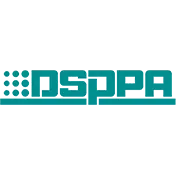
Traditional meeting forms are increasingly unable to meet the needs of contemporary meetings. Problems such as a large number of people meeting, complicated meeting materials, and inefficient meeting decision-making have become common problems of traditional meetings. If the novelty of paperless conferences in the past can only be used as decoration by those who do not know how to use them, then the current paperless conference system is already a "panacea" for conferences.
The paperless meeting room is a brand-new meeting mode that has become popular in the industry in recent years. There are many excellent paperless conference system companies. They integrate a variety of intelligent communication technologies, audio technologies, video technologies, and software technologies into all aspects of the conference before, during, and after the conference. Through the electronic exchange of files, the meeting will be It provides users with an extremely convenient and efficient conference platform, and also brings a new conference experience. The paperless conference system is far more than just realizing paperless conferences. It also needs to meet the functions of free interaction and interconnection of various signals in multi-functional conference rooms in the traditional sense.
The various shortcomings of traditional conferences have caused headaches for conference workers and participants: conference preparation is time-consuming and laborious, and it is not environmentally friendly. The paper used in each meeting causes a lot of waste of resources and environmental pollution; the flexibility is poor, and when there are temporary meetings or emergency meetings, or when there is a change in personnel, they are often insufficiently prepared, in a hurry, and even handwritten name tags occur from time to time; Various display tools are cumbersome and cumbersome, such as notebooks, projectors, whiteboards, paper, pens, laser pointers, electronic nameplate... It takes half a day to sort out large and small items, long-term and short-term for each meeting; the meeting confidentiality is poor, and it is difficult to destroy the traditional meeting confidential information in time after printing, the confidentiality of the meeting is also difficult to guarantee, and the paperless conference system can set a confidential meeting mode, the materials in the confidential meeting cannot be copied, and the fingerprints of the participants can sign in to ensure the confidentiality of the meeting; the sharing effect of traditional meeting materials is poor, that is, the traditional conference room Projectors, notebooks, etc. have been unable to meet the increasingly diverse forms of meeting materials, and the sharing of materials is poor, so it is impossible to ensure that participants can accurately receive information. The decision-making at the meeting is inefficient. The meeting is always discussing and discussing... but it is always difficult to reach a conclusion. Raising hands, counting, and recording when voting, and even counting notes when voting anonymously. These are not serious The voting function of the paperless intelligent meeting can set the voting options in advance, and can also increase the voting temporarily. It can be anonymous and registered, and the decision-making efficiency is high. It can also analyze the ticket type on the spot.
The paperless conference system is a part of the paperless conference interactive system, which uses modern communication technology, audio technology, video technology, and software technology to realize the paperless conference through the electronic exchange of files. Its features are networked file transmission, electronic file display, intelligent file editing, and controllable file input and output. A basic feature of the paperless conference system is that the conference room is equipped with a large screen for public video display and a seat display that is individually controlled and used by each seat. When seat display or asynchronous display is selected, the intelligent terminal is operated by the participants themselves, at this time, the smart terminal is like an independent standard computer, and each participant can independently switch between synchronous display or asynchronous display of public signals with one key.
The equipment covered by the paperless conference system includes audio systems, video systems, cloud conference systems, paperless conference interactive software, software systems that provide conference services and conference aids, and screen lifting or flipping systems for each seat. The displayed projection system or splicing screen, in addition to the network switch, central control system, DVD player, and video matrix are also equipment that often needs to be configured in the conference room.
A paperless conference system should first be an intelligent conference system. The intelligence here is not only to achieve intelligent management and control of the equipment used in the conference room, but also to provide intelligent tools and services for the conference process, and more importantly, to be able to realize the intelligence of the conference process, usage methods, and even data retrieval and conference decision-making change. At the same time, the conference meeting equipment must adapt to and be compatible with the rapid development of information technology, the overwhelming number of software products, and the intelligent decision-making proposed by the explosive growth of background data and information resources due to the emergence of the Internet, cloud computing, and big data.
Centered on LCD touch display terminals (LCD touch screens, conference panels, etc.), it integrates high-definition video and unified communication functions, intelligent multi-screen interactive sharing functions, intelligent conference room central control, audio and video acquisition and sound reinforcement systems, etc., to form a "People-oriented" intelligent conference experience. It integrates conference functions on the intelligent display terminal to the greatest extent (video sign-in, call service, bidding, and voting, SMS sending and receiving, document asynchronous viewing, conference materials synchronous display and handwritten annotations, video on demand or live broadcast, Internet browsing, conference speeches, etc.) And provide users with the most natural human-computer interaction interface in the form of simulated UI (support multi-point pinch zoom on the capacitive screen, swipe the screen to turn pages to read comments, send and save operations), and also realize mobile phones, tablets, Collaborative work, intelligent sharing and interactive control of mobile terminals such as laptops and intelligent display terminals.